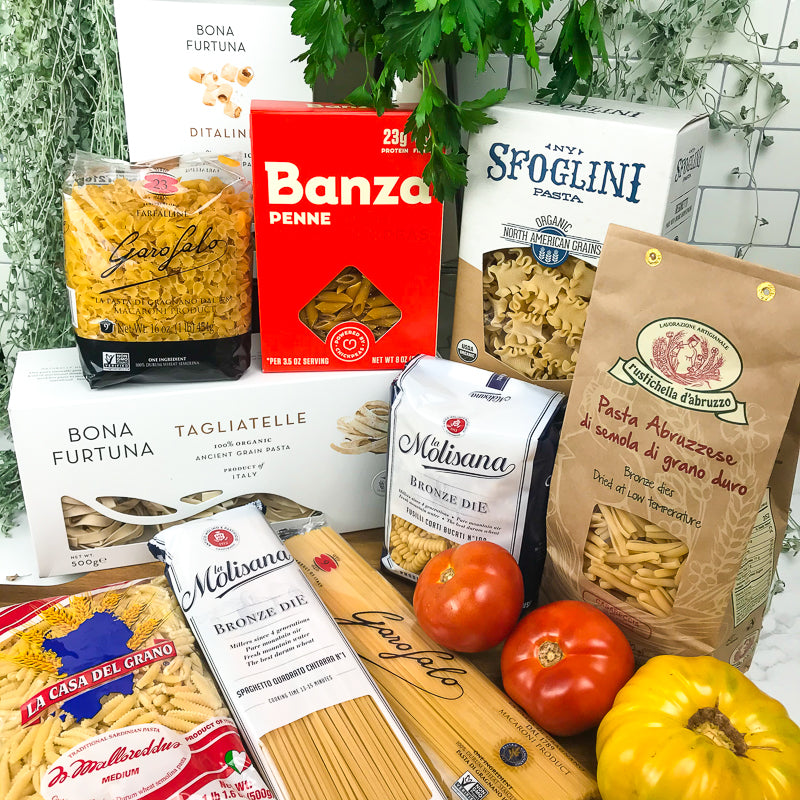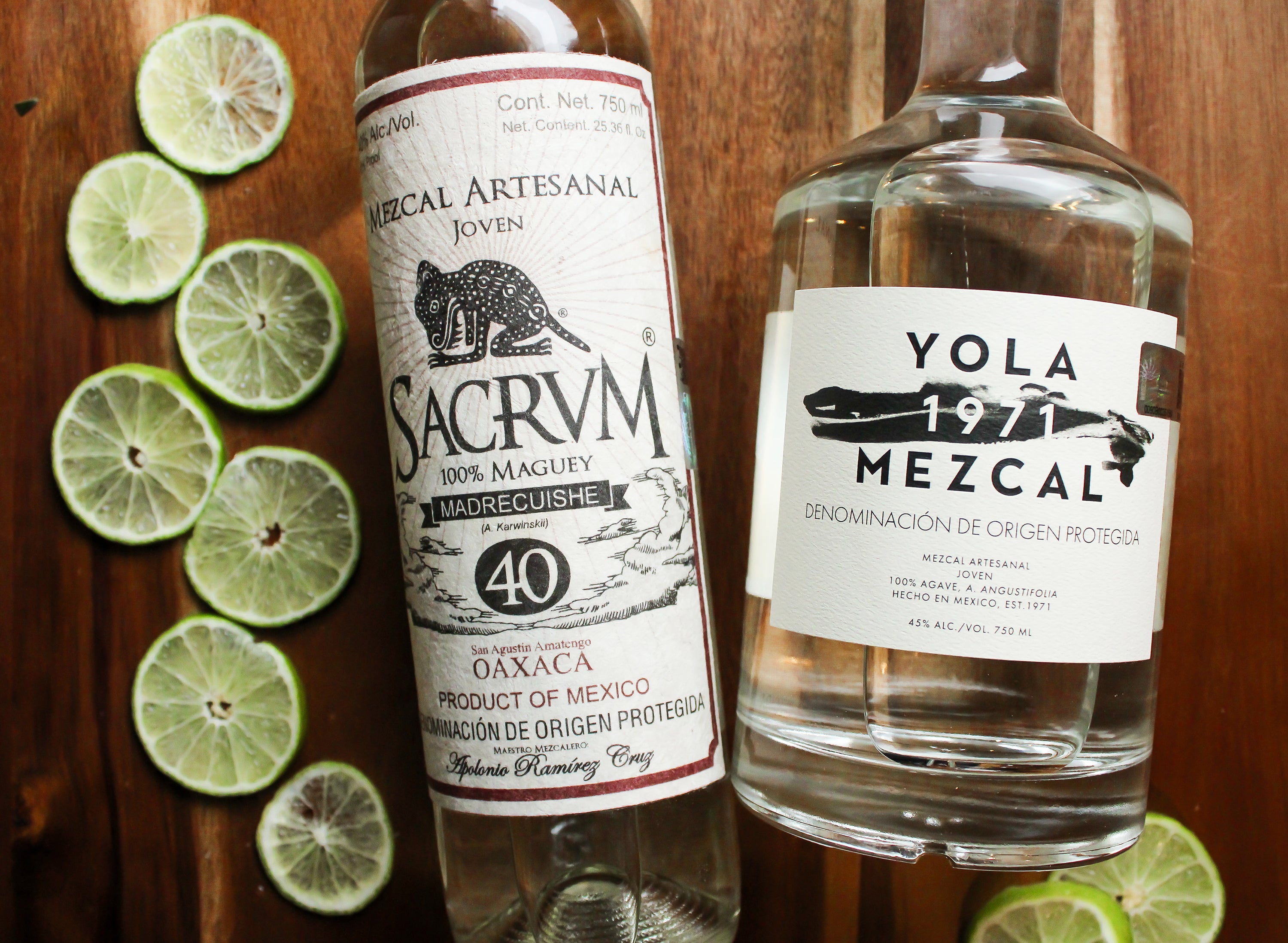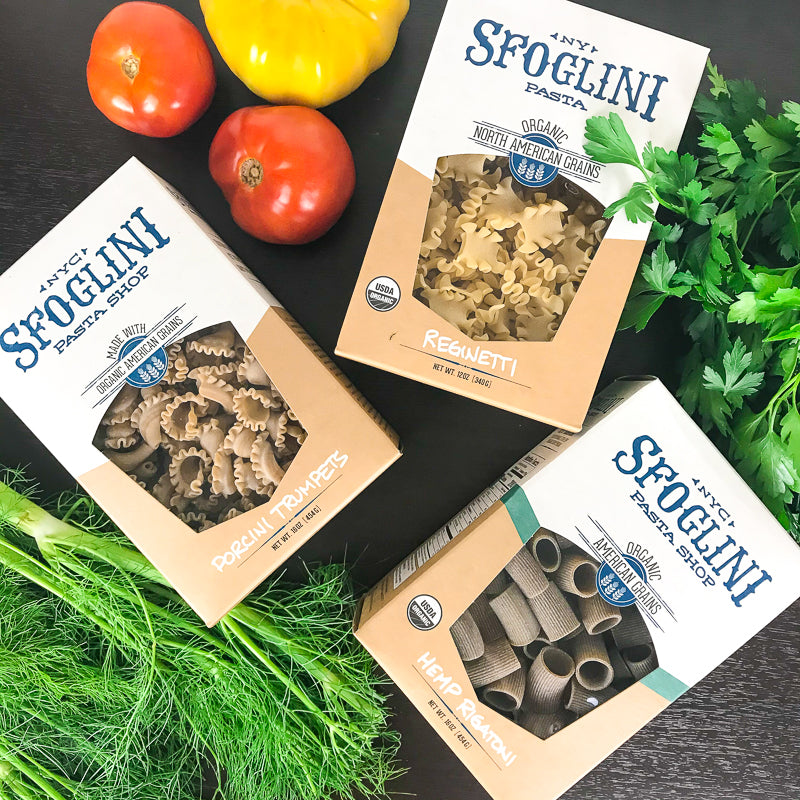
Unlimited Pasta-bilities: A Pasta Primer
A huge bowl of pasta with a hearty sauce and a generous dusting of grated Parmigiano; can you think of anything more comforting in its simplicity? With somewhere in the neighborhood of 350 different pasta shapes in the world, everyone has their favorite (although we don’t know how many fans penne lisce might have). We think pasta deserves its own day—and it does! National Pasta Day is Saturday, October 17, and to celebrate we’ve put together a guide to some of our favorite pastas we carry; a pasta primer, if you will.
Sfoglini
There’s no better place to start than close to home. Sfoglini has been making high quality pasta since 2012, when they first established themselves in the Pfizer building in Williamsburg. (You might even remember when we carried their fresh pastas at our first location at 753 Fulton Street!) We only have good things to say about their delicious local pastas, but they’ve got even more to say in this Q&A with Scott Ketchum, Creative Director and co-founder of Sfoglini!
Rustichella
Possibly the most numerous on our towering pasta shelf, Rustichella d’Abruzzo has been making sauce-loving pasta since 1989, though its founding family has roots in pasta making going back as far as 1924. Their name comes from the rustic texture of their pasta—which is what makes sauce cling so well—that comes from the bronze dies they use in shaping. High quality durum semolina flour and pure mountain water, combined with an extra long drying process that encourages a small amount of fermentation, gives this pasta a delicious flavor that works even with just a dash of olive oil.
La Molisana
La Molisana gets its name from the mountainous region of Molise, Italy, where the Carlone family founded the pasta-making company in 1912. For four generations and counting, this award-winning pasta maker has controlled the full production cycle of their pasta; from grain to table, as they put it. Rather than rely on a single variety of wheat, La Molisana makes their own nutritious blend for just the right flavor and texture, and are most known for their square spaghetti, which adds extra sauce-gripping texture to the classic noodle shape. Their mountainside factory is one of the highest in all of Italy, in a veritable natural paradise that makes for perfect pasta making conditions.
Garofalo
Garofalo is certainly the oldest pasta brand we carry; it may be the oldest pasta maker in the world! Garofalo has been making pasta since 1789, just a mere few decades after the very first pasta factory license was issued. Established in Gragnano, a tiny coastal Italian town near Pompeii with a climate perfect for pasta making, Garofalo’s reputation for excellence has brought Gragnano its own reputation for being the birthplace of pasta.
Banza
By contrast, Banza is a fairly young company, founded in 2014 by brothers Brian and Scott Rudolph when the former was only 23. Brian wanted a gluten free pasta that offered actual nutritional value, and in his kitchen experiments he found the mighty chickpea gave him what he was looking for. A tasty, sturdy pasta was born, with a high protein content and even more fiber, that just happened to be gluten free. (We’ve found it also stands up well to the leftovers test, refrigerating and reheating without falling apart as many other gluten free pastas do!)
La Casa Del Grano
They say that every region of Italy has its own style of pasta, and La Casa Del Grano makes good on that saying. They specialize in Sardinian styles of pasta—that is to say, pastas traditional to the Italian island of Sardinia. Malloreddus pasta, or gnochetti as it’s known in Italian, might look a bit like cavatelli, but it’s purely Sardinian in origin! This pasta shape is particularly sauce-friendly, but does especially well in a ragú. La Casa Del Grano has been making malloreddus and other Sardinian pastas since the 1950s by the Rais family, and stays family-owned to this day.
Bona Furtuna
Unlike other pasta makers on this list, Bona Furtuna isn’t solely dedicated to the art of pasta. Their 350-hectare organic farm began as an olive farm, populated by the heirloom Biancolilla Centinara olive tree—nearly extinct before Bona Furtuna revived it with the help of a master botanist, and found nowhere else on earth. Now, not only do they produce high quality olive oil, but also 100% organic, non-GMO pasta made with Italian heirloom grains you won’t find in the United States, like Tumminia and Russello.


